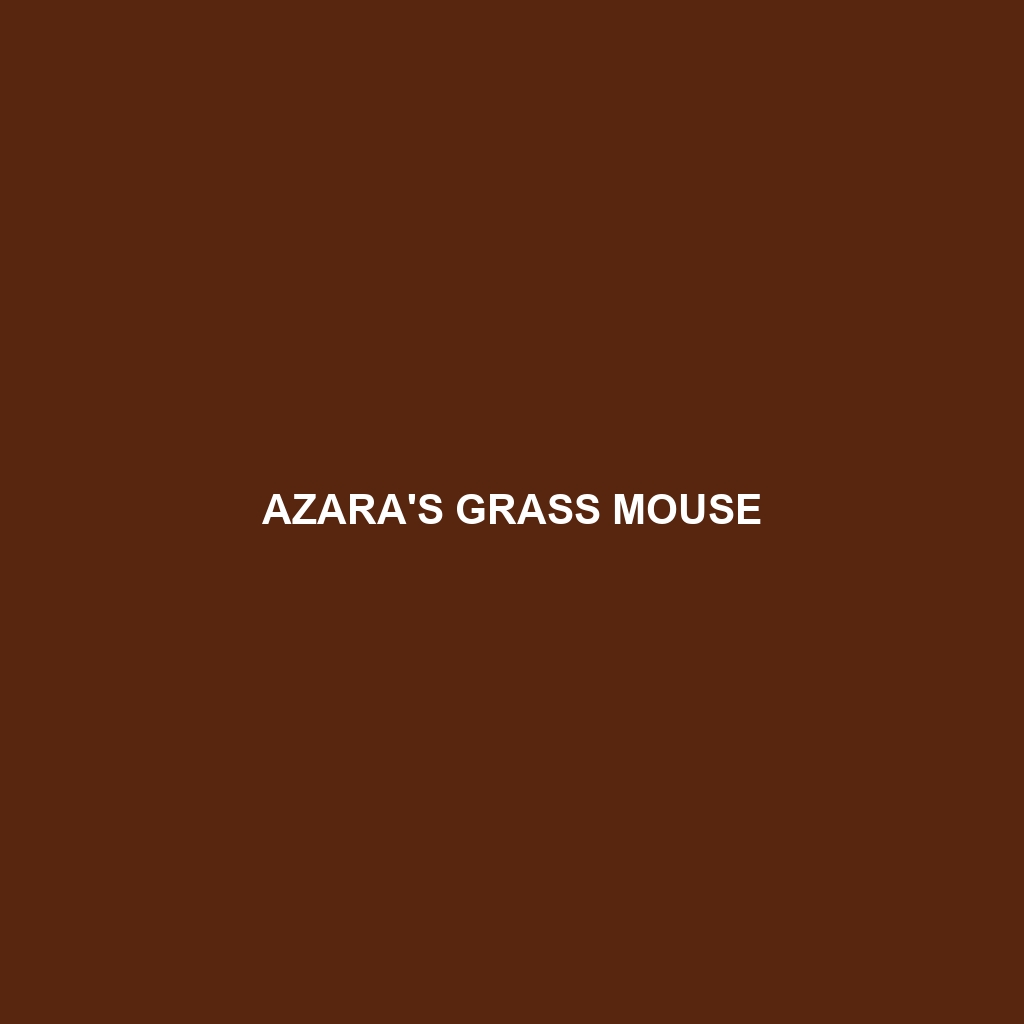Azara’s Grass Mouse: A Comprehensive Species Description
Common Name: Azara’s Grass Mouse
Scientific Name: Akodon azarae
Habitat
Azara’s Grass Mouse is primarily found in the grasslands and shrub habitats of South America, particularly in Argentina, Uruguay, and parts of Brazil. These environments provide the ideal conditions for these rodents, featuring tall grasses and diverse vegetation, which serve as both cover and foraging grounds. They thrive in open, well-drained landscapes and are often associated with agricultural areas where they can easily access food sources.
Physical Characteristics
Azara’s Grass Mouse is medium-sized for its genus, typically measuring between 18 to 25 centimeters in total length, including the tail. These mice exhibit a light brown to grayish fur, which aids in camouflage among grasses. Their underbelly is typically a lighter shade, often white or cream. Noteworthy features include large eyes and rounded ears, contributing to their keen senses, essential for evading predators.
Behavior
Azara’s Grass Mouse is primarily nocturnal, actively foraging for food during the night. They are social creatures, often found in groups and displaying complex social behaviors. These mice are known for their agility and can quickly burrow into soil or grass to escape threats. Their playful interactions and vocalizations during social activities are of interest to researchers and wildlife enthusiasts alike.
Diet
The diet of Azara’s Grass Mouse mainly consists of seeds, roots, and other plant materials. They have a preference for grasses and will often store food in their burrows, creating caches for sustenance during less abundant seasons. This seed-based diet plays a crucial role in the dispersal of plant seeds, making them important contributors to their ecosystem.
Reproduction
Azara’s Grass Mouse breeds throughout the year, with peak breeding season typically occurring in the warmer months. Females can produce multiple litters annually, each consisting of 3 to 7 offspring. The young mice develop rapidly, attaining independence within a few weeks, which contributes to their robust population dynamics.
Conservation Status
Currently, Azara’s Grass Mouse is classified as “Least Concern” by the International Union for Conservation of Nature (IUCN). However, habitat loss due to agricultural expansion and urban development poses a potential threat to their populations, making ongoing monitoring essential.
Interesting Facts
– Azara’s Grass Mouse is named after the French naturalist Felix de Azara, who studied the species in the 18th century.
– These mice have a unique ability to escape predators by diving into dense grass, making them hard to spot.
– They exhibit a range of vocalizations for communication, which adds a social dimension to their behavior.
Role in Ecosystem
In the ecosystem, Azara’s Grass Mouse serves as both prey and contributor to seed dispersal. As a food source for various predators, including birds of prey and small mammals, they play a vital role in the food web. Additionally, their foraging habits help maintain plant diversity by facilitating the growth of herbaceous plants in their territories.
